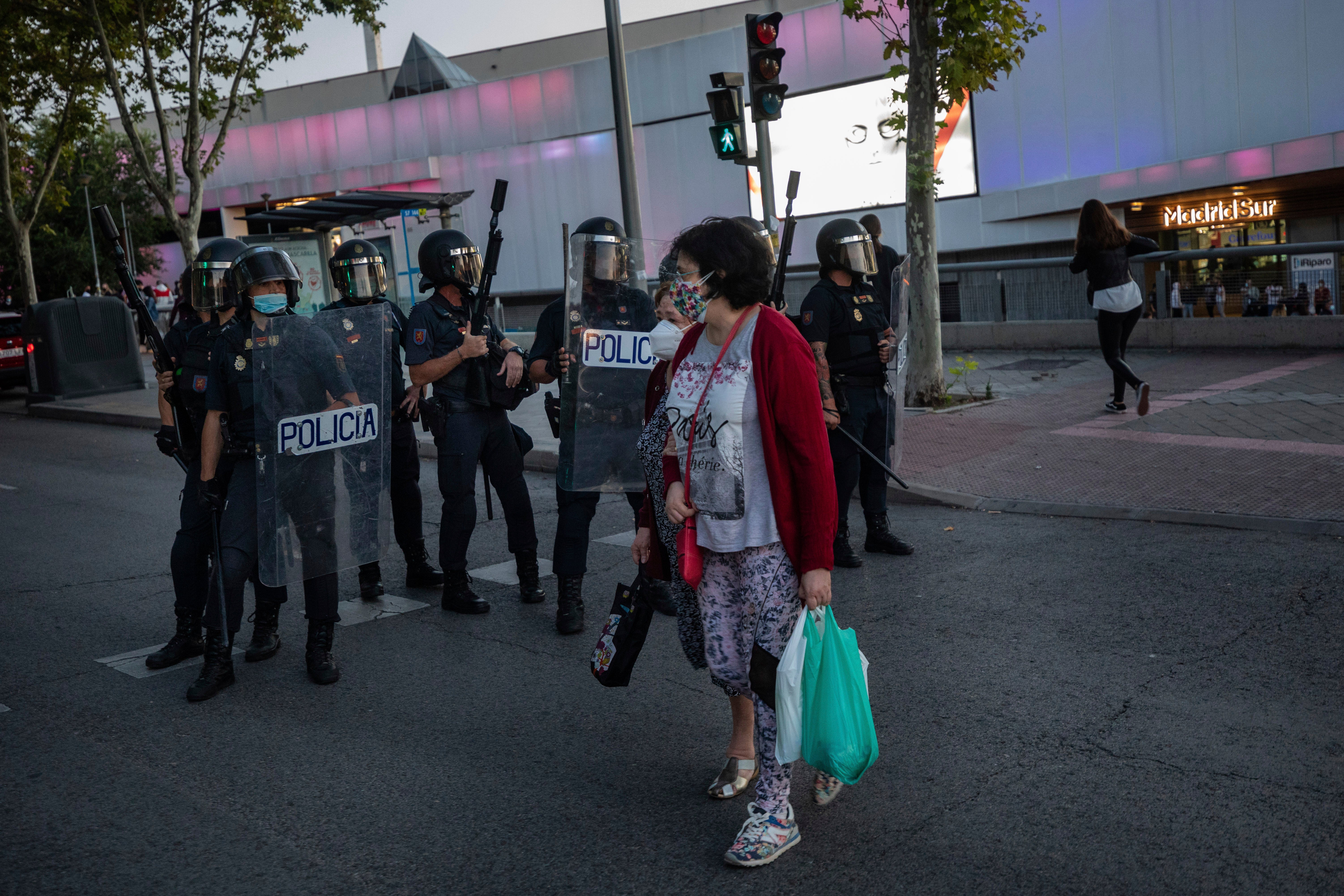Coronavirus: Madrid resists government pressure to extend soft lockdown
Spanish government recommends lockdown for 3.3 million residents

Your support helps us to tell the story
From reproductive rights to climate change to Big Tech, The Independent is on the ground when the story is developing. Whether it's investigating the financials of Elon Musk's pro-Trump PAC or producing our latest documentary, 'The A Word', which shines a light on the American women fighting for reproductive rights, we know how important it is to parse out the facts from the messaging.
At such a critical moment in US history, we need reporters on the ground. Your donation allows us to keep sending journalists to speak to both sides of the story.
The Independent is trusted by Americans across the entire political spectrum. And unlike many other quality news outlets, we choose not to lock Americans out of our reporting and analysis with paywalls. We believe quality journalism should be available to everyone, paid for by those who can afford it.
Your support makes all the difference.Health authorities in Madrid are expanding restrictions on movement to a further eight areas of the Spanish capital, which is leading the country’s contagion curve, despite a recommendation from the national government that the partial lockdown should apply to all the city.
Over 850,000 residents in 37 neighborhoods have been confined this week to their areas unless they have a reason to go elsewhere, while maximum capacity in shops and restaurants has been reduced.
Those limitations will now be expanded to 160,000 more people in areas where more than 1,000 people per 100,000 residents have tested positive for the new virus in the past two weeks — the highest rates in Europe — the Madrid regional government announced Friday.
Throughout Madrid and its surrounding region, gatherings are limited to a maximum of 6 people.
In a hastily organized press conference, national Health Minister Salvador Illa said that the Spanish government was recommending tougher measures, including a partial lockdown, for the whole of Madrid and its 3.3 million residents, not just heavily affected areas.
The limitations have been protested by locals who claim that they are being targeted because they live in poor neighborhoods with denser population and worse infrastructure than more affluent areas, and where more people use public transportation to get to work.
Politicians at both national and regional levels have been at odds over the response since the first day of the pandemic, although they recently agreed to negotiate a coordinated response to the worrying outbreaks in Madrid. The truce lasted less than a week, with Friday’s competing press conferences conveying a message of disagreement and political blame-exchange.
Spain is fighting a cumulative coronavirus caseload over 700,000 with the worry focusing in Madrid and its surrounding region, where more than one third of the new infections are happening. The total death toll since the start of the pandemic reached 31,118 on Thursday. Because of limited testing and missed cases, among other factors, the figures don’t capture the true extent of the damage wrought by the virus.
___
Follow AP’s pandemic coverage at http://apnews.com/VirusOutbreak and https://apnews.com/UnderstandingtheOutbreak